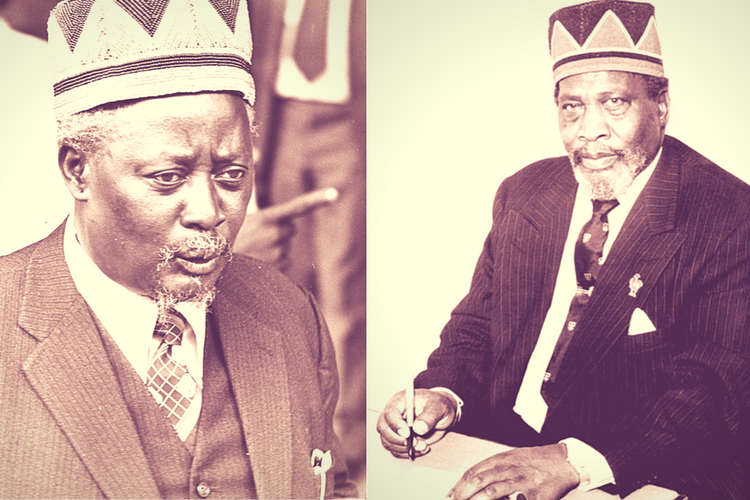After Independence, Kenya retained the British system of administration that had been used during colonialism. Many members of KADU (Kenya African Democratic Union) joined the ruling KANU (Kenya African National Union). The Kenya African National Union (KANU) favored a centralized government approach and soon became a one party state.
Kenyatta became President with considerable executive powers while Oginga Odinga became Vice President. Daniel Arap Moi, a former KADU leader joined cabinet as Minister of Home Affairs. The Kenyatta government continued to govern using under the old colonial structures, except Africans now occupied key government positions.
The government’s economic policies were moderate and influenced by Mboya and Mwai Kibaki. They encouraged foreign investment and private enterprise. These policies were favored by the middle class and land owners. Britain provided funds to buy farms out the farms of settlers who wanted to leave after independence. During the first fifteen years, over two million acres were resettled. Some of the funds were made available as loans to African who wanted to buy whole farms from settlers. Many settlers left the country but some Asians who opted for British citizenship remained in the country. The government introduced new immigration and work permit rules that favored increased African participation in the private sectors of the economy.
After 1964, divisions within KANU led to a rift in the party. Vice President Odinga who favored a more socialist approach to government was increasingly sidelined and eventually lost his position as Vice President. He left the party to form the Kenya Peoples Union (KPU). At the time twenty nine representatives and senators also left to join KPU.
In response, KANU’s Mboya helped to pass a constitutional amendment which required those who change party affiliation to resign from Parliament. This led to the Little General Election of 1966. Odinga’s KPU won mostly in Luo regions. Daniel Arap Moi was appointed Vice President in 1967 and continued as Minister of Home Affairs as well. The KANU led government succeeded in frustrating KPU including disqualifying their candidates from municipal elections in 1968 for improper filing of nomination papers. After the assassination of Mboya and disturbances at President Kenyatta’s opening of a new hospital in Kisumu, KDP was banned and the leaders detained. Oginga Odinga remained in detention without trial until 1971.





2 responses to “The Political History of Kenya’s KANU, KADU & KDP in the 1960s”
Fast forward to 2008 & its now the sons fighting each other for the presidency. Same script a generation later smh….
The first Kenyatta sought capitalism to so that blacks could participate in the private sector. The result was a wealthy class of rulers. Today the wealthiest Kenyans are the Kenyattas, Mois & Kibakis.